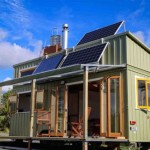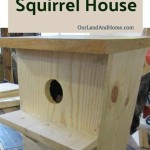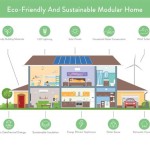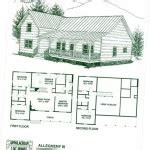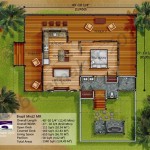Hummingbird House Plans: Build a Cozy Haven for Tiny Birds
Hummingbirds, with their vibrant plumage and incredible aerial acrobatics, are a welcome sight in any garden. Attracting these tiny dynamos involves providing a nectar source, typically through brightly colored flowers and hummingbird feeders. However, offering a safe and comfortable nesting location can further enhance their habitat and encourage breeding. This article will explore hummingbird house plans and how they can be incorporated into any outdoor space to create a haven for these fascinating creatures.
Understanding Hummingbird Nesting Habits
Before embarking on building a hummingbird house, understanding their nesting habits is crucial. Hummingbirds do not use traditional birdhouses like other species. Instead, they construct tiny, cup-shaped nests on tree branches, typically on a downward-sloping, sheltered limb. Their nests are incredibly small, often no larger than the diameter of a half-dollar coin, and constructed from plant down, spider silk, and lichen, camouflaging them against the branch. The female hummingbird solely undertakes the nest-building, incubation, and chick-rearing responsibilities.
Choosing the Right Location for a Hummingbird House
While hummingbirds don't use enclosed birdhouses, providing a stable platform that mimics their natural nesting preference can be beneficial. This platform should be sheltered from direct sunlight, wind, and rain. Ideal locations include under a wide leaf, attached to a sturdy branch away from human activity, or beneath a sheltered porch overhang. Avoid placing the platform near hummingbird feeders, as the activity around the feeders might disturb nesting birds. A height of 5 to 15 feet above the ground is generally recommended.
Materials for Building a Hummingbird Nesting Platform
Building a simple nesting platform requires minimal materials and effort. Small pieces of untreated wood, such as cedar or redwood, are ideal due to their weather resistance. Avoid using pressure-treated lumber as the chemicals can be harmful to the birds. Other necessary materials include small nails or screws, exterior-grade wood glue, and natural nesting materials. Suitable nesting materials include small twigs, soft plant fibers, moss, and lichen. Avoid using cotton or yarn, as these materials can trap moisture and endanger the chicks.
Constructing the Hummingbird Nesting Platform
The platform can be a simple square or circular design, approximately 4 inches in diameter. Ensure the surface is slightly concave to prevent the nest from rolling off. Securely attach the platform to a chosen branch or structure using nails or screws. Once the platform is in place, add a layer of the natural nesting materials to provide a base for the hummingbirds to build upon. Avoid gluing the nesting materials down, allowing the hummingbirds to arrange them as needed.
Attracting Hummingbirds to the Nesting Platform
Once the platform is installed, attracting hummingbirds to the area becomes essential. Planting native flowering plants that provide a nectar source is a key factor. Tubular-shaped flowers in red, orange, and pink are particularly attractive to hummingbirds. Providing a clean water source, such as a shallow birdbath or mister, is also crucial. Avoid using pesticides or insecticides in the garden, as these chemicals can be harmful to hummingbirds and their food sources.
Maintaining the Hummingbird Nesting Platform
Minimal maintenance is required for the nesting platform. After the nesting season is over, carefully remove any old nesting material and inspect the platform for damage. Clean the platform with a mild soap and water solution and allow it to dry thoroughly before adding fresh nesting materials for the next season. Avoid disturbing the platform during nesting season as this can cause the hummingbirds to abandon their nest.
Benefits of Providing Hummingbird Nesting Sites
Providing suitable nesting sites for hummingbirds offers several benefits. It helps support and increase local hummingbird populations, contributes to a healthy ecosystem, and provides an excellent opportunity to observe these fascinating creatures up close. Furthermore, creating a hummingbird-friendly environment enhances the beauty and biodiversity of any garden or outdoor space.
Protecting Hummingbirds and their Habitat
Beyond providing nesting platforms, protecting hummingbirds and their habitat necessitates a broader approach. Supporting conservation efforts, reducing pesticide use, planting native plants, and educating others about the importance of hummingbirds are all crucial steps. By taking these measures, individuals can contribute to the long-term survival and well-being of these remarkable birds.

Itopfox 3 Piece 1 Bird Natural Wood Finish Hummingbird Houses For Garden Window Outdoor Home H2sa04 3ot227 The

Wooden Birdhouse For Outside Hanging Small Bird Houses Wild Nesting Box Outdoor Hummingbird House Bluebird Finch Cardinals

Wooden Birdhouse For Outside Hanging Small Bird Houses Wild Nesting Box Outdoor Hummingbird House Bluebird Finch Cardinals And Made In China Com

Itopfox 3 Piece 1 Bird Natural Wood Finish Hummingbird Houses For Garden Window Outdoor Home H2sa04 3ot227 The

Wooden Birdhouse For Outside Hanging Small Bird Houses Wild Nesting Box Outdoor Hummingbird House Bluebird Finch Cardinals And Made In China Com

Wooden Birdhouse For Outside Hanging Small Bird Houses Wild Nesting Box Outdoor Hummingbird House Bluebird Finch Cardinals And Made In China Com

Itopfox 3 Piece 1 Bird Natural Wood Finish Hummingbird Houses For Garden Window Outdoor Home H2sa04 3ot227 The

Handmade Wooden Hummingbird Birdhouse Nest Waterproof Rustic Garden Ornaments Decor From Xuan10 20 58 Dhgate Com

Itopfox 3 Piece 1 Bird Natural Wood Finish Hummingbird Houses For Garden Window Outdoor Home H2sa04 3ot227 The

Wooden Birdhouse For Outside Hanging Small Bird Houses Wild Nesting Box Outdoor Hummingbird House Bluebird Finch Cardinals And Made In China Com
Related Posts

